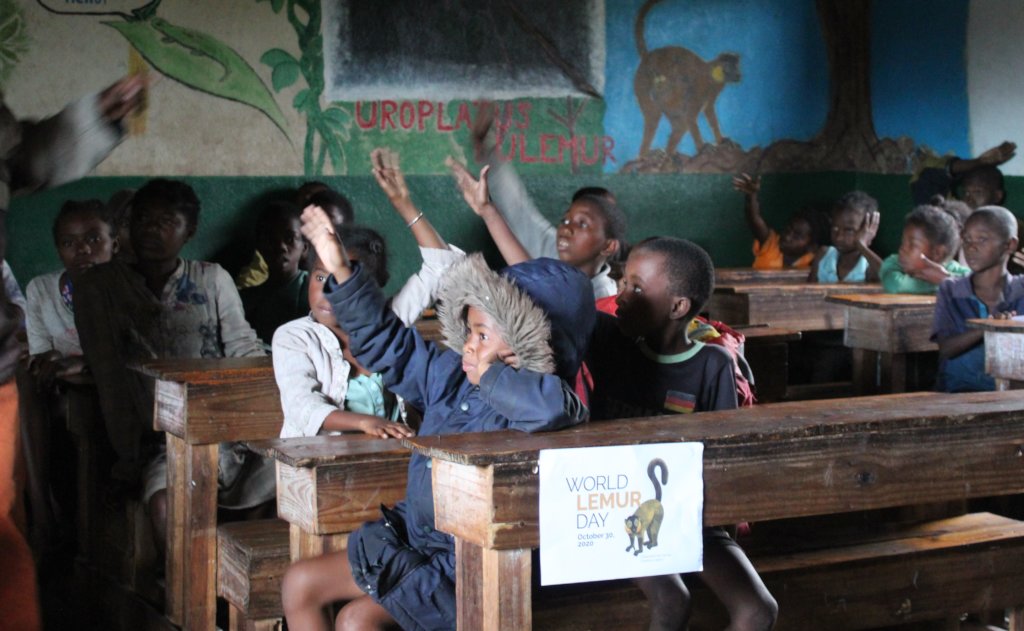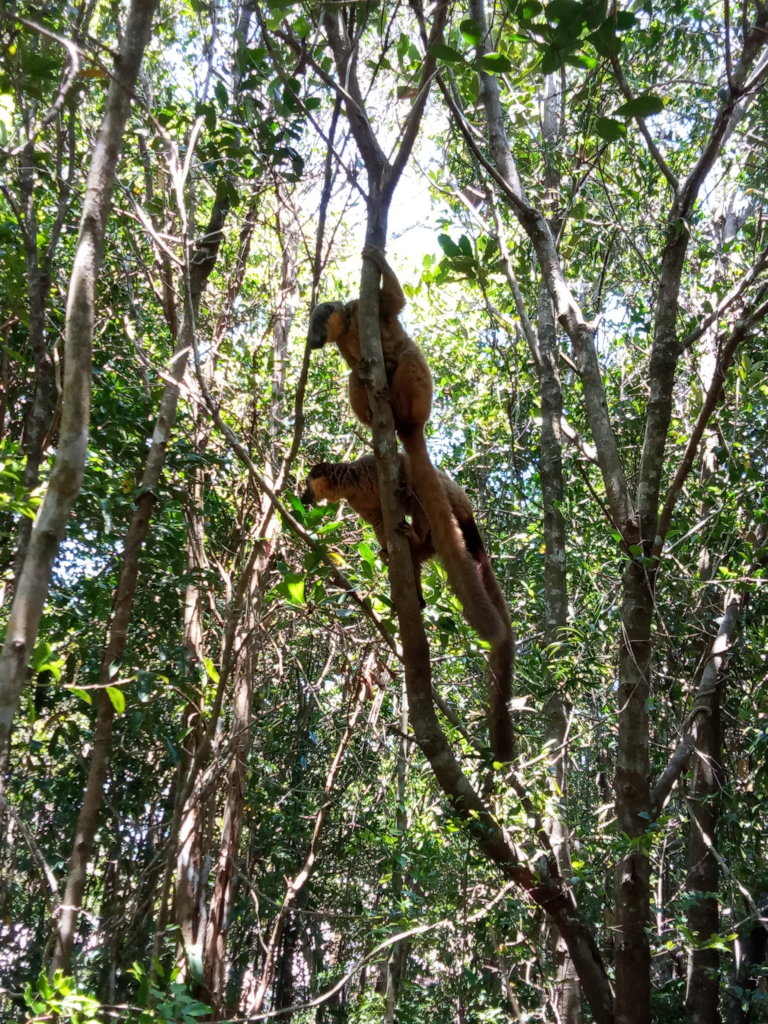By Emma Irving | Programme Development Officer
Who doesn’t enjoy watching a good nature documentary? As well as allowing us to marvel at the beauty of the natural world, nature documentaries have been found to increase our interest in the species being filmed and support shifts in environmental attitudes.1
For us in developed countries, documentaries showing the enormous variation in animals and plant species throughout the world can be crucial to connecting us with nature in an increasingly urbanised society. However, even in the remote community of Sainte Luce where our lemur project is based, despite people being surrounded by nature, people are still shocked at just how valuable and extraordinary their local biodiversity is.
The way we interact with nature may be very different across societies, but the way in which we spark interest and appreciation for nature could be quite similar. Therefore, this World Lemur Day, Project Ala decided to celebrate by holding film screenings in Sainte Luce of the fabulous documentary series ‘Madagascar’, translated in Malagasy.
By visualising the dramatic landscapes and diverse wildlife across Madagascar, the screenings proved to be a novel and exciting way to raise awareness of the country’s unique biodiversity and the importance of conserving it. By doing so we hoped to highlight the value of nature in Sainte Luce and engage the community in Project Ala’s conservation work to reconnect fragments of littoral forest habitat and support lemur populations. Sainte Luce is a vitally important location for lemur conservation because it supports populations of four different endangered species: The Anosy Mouse Lemur, Southern Woolly Lemur, Thomas Dwarf Lemur, and Collared Brown Lemur, all of which are worth celebrating!
Over the two-day lemur-inspired event we held four screenings at Manafiafy and Ambandrika Primary Schools and a fifth screening for Project Ala’s stakeholders, including corridor landowners, members of the forest management committees, and a representative of the regions Environment Ministry. As we were unable to hold a community-wide mobilisation effort due to COVID-19, it was important for us to reach as many members of the community as possible, while ensuring their safety. Therefore, the documentary was shortened so we could hold multiple screenings with 30 people attending each and hired extra community members to ensure people’s safety within any crowds. Following the screenings, we held a quiz to test students and stakeholders on the documentary, general lemur knowledge, and on Project Ala. Prizes of exercise books and pencils for the new school year and refreshments added to the celebratory atmosphere.
Smiles and enthusiasm on the day showed that everyone enjoyed the event, but feedback provided by the students highlighted its successes. One student expressed that they had not heard of the supercontinent of Gondwana that Madagascar broke away from 180 million years ago, giving rise to the high levels of endemism that we see across the country today. Another student did not realise that tenrecs were only found in Madagascar and nowhere else in the world. Whilst another did not know that the Variky, or Collared Brown Lemur, which can be seen easily in Sainte Luce during the day, is cathemeral, meaning they are also active during the night.
Raising awareness of nature alone will not be enough to lead to behavioural change for conservation in the long-term. However, when placed alongside Project Ala’s other engagement and capacity building activities, celebrating events like World Lemur Day plays an important role in creating value and interest in nature which are the building blocks for achieving the local support and leadership required for conservation success. Despite the unusual circumstances this year, Project Ala could not let World Lemur Day pass us by and so we joined the world in celebrating these incredible species at the local level, where it matters most.
We would like to thank the Madagascar Biodiversity Partnership for providing a copy of the translated documentary.
1 FernándezBellon, D., & Kane, A. (2019). Natural history films raise species awareness—A big data approach. Conservation Letters, 13(1). doi: 10.1111/conl.12678.
Project reports on GlobalGiving are posted directly to globalgiving.org by Project Leaders as they are completed, generally every 3-4 months. To protect the integrity of these documents, GlobalGiving does not alter them; therefore you may find some language or formatting issues.
If you donate to this project or have donated to this project, you can receive an email when this project posts a report. You can also subscribe for reports without donating.
Support this important cause by creating a personalized fundraising page.
Start a Fundraiser
